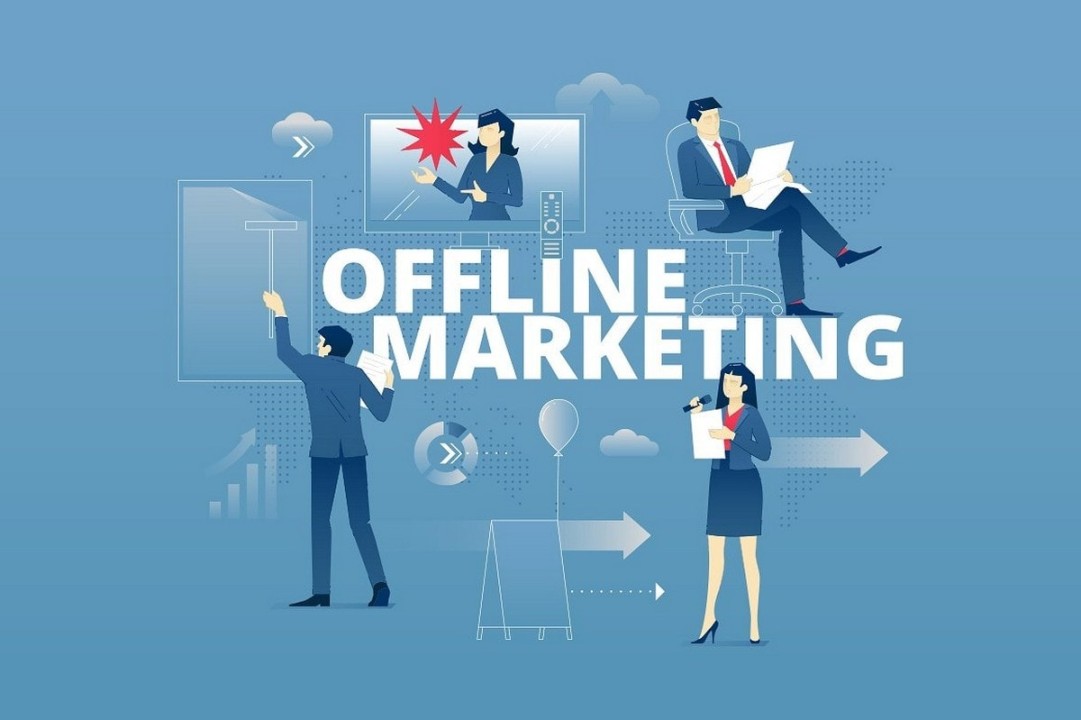Imagine that a potential buyer is perusing a beautifully designed brochure, attending an engaging trade show, or receiving a personalised letter in their post. These experiences create specific connections that are difficult to convey through digital advertisements.
At a time when marketing has shifted towards the digital domain, offline marketing is also witnessing growth. People are recognising that they can capture audiences’ attention in the real world as well. With online marketing being heavily saturated, offline marketing offers opportunities to stand out and make a lasting impression.
In this post, we will discuss why offline marketing remains relevant, outline effective techniques, and explore how to measure outcomes. In conclusion, you will see that developing both an online and offline marketing strategy is essential, not merely a good idea.
The Importance of Offline Marketing Have you ever thought that offline marketing is a thing of the past? Look closely. Although digital marketing through paid advertisements and search engines has taken centre stage, offline marketing can achieve results that are far more challenging for software to replicate.
Increased Brand Recall
Online ads are easily forgotten. They are often overlooked within seconds. In contrast, offline marketing resonates more profoundly with people. Business cards and branded merchandise linger longer, reminding customers of your brand. A thoughtfully designed print advertisement in a magazine, or a creatively crafted direct mail piece can leave a more lasting impression than the average digital pop-up ad.
For example, personalised Coca-Cola “Share a Coke” bottles launched as a campaign and have since endured. The online engagement strategy contributed to the emotional connection associated with the physical bottles.
Personal Touch and Human Connection
Nothing compares to genuine human interaction where face-to-face contact occurs. The impression left by an offline exchange often runs deeper than any online interaction. In marketing, offline strategies have a personal touch, whether it is during a trade show with a warm handshake or a handwritten letter sent via direct mail.
As a case in point, small local businesses seem to dominate community affairs. They sponsor local events or set up a stall at a farmers’ market where the brand becomes visible to their target audience, thus establishing trust and relationships.
Reduction in Digital Fatigue
Honestly speaking, how many times have you mindlessly passed over a digital ad due to apathy? The truth is you are not alone. As screen fatigue becomes more prevalent, people are spending increasingly more time on screens and becoming overwhelmed and bored. In comparison to the clutter of online advertising, offline marketing feels refreshing and alleviates monotony. For instance, personalised postcards or bespoke packaging are far more appealing than continuously scrolling through an online window filled with advertisements.
Offline Marketing Techniques
Now that you understand the significance of offline marketing, you surely have a sense of how to incorporate it. The good news? There are numerous options available that can yield results if executed correctly.
Print Marketing
Flyers, brochures, and business cards are still fundamental to offline marketing and will always be due to print still having notable impact.
How it works: A local boutique could hire a professional graphic designer to create flyers promoting an in-store sale. These flyers can be handed out to local residents, and shoppers can present them to receive a special discount.
Why it works: Unlike online materials such as social media posts, print engages the senses. You don’t just read the ad; you can touch and feel it. Colours, textures, and designs aren’t quickly clicked away, but rather remain in someone’s home or desk.
Events and Trade Fairs
Trade fairs and special events offer unparalleled opportunities to engage your clients and target audience while they focus on your specific brand. These activities are also ideal for building relationships and associations with your brand.
For instance, a technology firm may set up a stand at a conference and showcase their latest devices with live presentations. A delightful touch? Distributing promotional items such as custom tote bags or branded USB sticks.
Such a strategy helps to promote active participation. Potential clients and partners get the chance to meet face-to-face with your staff, interact, ask questions, and see your brand firsthand.
Offline Advertising
Direct marketing is not dead; it is just evolving. Thoughtfully crafted and personalised pieces of mail gain more attention than automated spam emails ever will.
Imagine a subscription box company which, aside from sending your shipments, also includes handwritten thank you notes with a coupon for the next shipment.
Adding value makes customers feel appreciated, thus, making them more likely to remain loyal to your brand.
Tracking Effectiveness of Offline Marketing
Offline marketing and advertising is still a concern for many brand managers mainly due to accurately gauging how effective it is for the business. Luckily, there are numerous approaches to determine your ROI.
Surveys and Feedback Forms
One of the most basic yet effective ways to measure influence is by requesting feedback. Surveys, in person or online, can show a business how their campaign was received by its audience.
Take, for example, if you are distributing flyers for a local restaurant which is opening for business. You can add a QR code that links to a survey. Enter a draw for a free drink during their next visit as a small reward!
Unique Promo Codes
The use of unique promo codes is one of the best ways to directly address the offline and online issue. Through direct mail or printed advertising, exclusive codes can be distributed offline, while digitally they can be tracked.
For example, a clothing retailer can issue unique promo codes that are placed in print ads, alongside ones placed in email newsletters. By measuring the usage of these codes, the retailer can easily determine which of the two channels was more effective.
Website Traffic Analysis
Less frequently discussed, but equally as important, is the way non-digital advertising campaigns impact online traffic. If hosting a booth at a trade show, make sure to include your website or a specially dedicated landing page on all of your materials. After the trade show, check your web analytics for traffic spikes.
Google Analytics is one of many tools available to measure how people arrived at your website. This information sheds light on how disconnected marketing activities affect web-based activity.
Achieving Marketing Success
Offline marketing is NOT here to outrank digital marketing; it is here to niche it. By blending approaches, businesses can achieve optimum results. Think of it as yin and yang – opposites which complete each other.
Consider these examples:
• Social media can be used to build anticipation for live events.
• Use QR codes in print ads to boost online traffic.
• Personalised emails can follow direct mail pieces.
If executed well, the merging of online and offline marketing strategies results in greater outcomes. This ensures that a specific brand is not only visible but also remembered.
Boost & Refresh Your Marketing Approaches
Even though a lot of noise is made regarding digital marketing, offline marketing helps emphasise the intrinsic value of tangible assets. They provide a human element, foster trust, and cut through the cacophony of the digital world. Eye-to-eye conversations at a tradeshow or a well-placed flyer on a desk, offline strategies solve a problem in marketing.
Keep in mind, no one strategy defeats the other. The combination of offline strategies with your existing digital strategies is optimal and balance is the answer.
Want to move further ahead? Begin thinking about your offline campaign, whether it’s your first or you’re trying to enhance it. You might be amazed at how well it improves your brand value.
Check out our blog for more interesting reads.



